I have become quite a specialist in outfitting bicycles with Rohloff hubs.
If you don’t know the Rohloff hub is basically an upgraded version of your Grannies three speed. Well, not if your granny is in this gang:
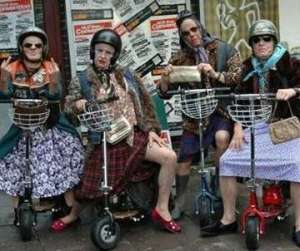
It is an internally geared hub with 14 evenly spaced gears inside of it. No deraillieurs needed.

My customers and myself love them. They have many, many advantages and few disadvantages. I will go into some of them here. There are many “opinions” on the Internet and most of them are not based in any form of reality. I have over 10 years of experience spec’ing these devices and using them personally.
Derailleurs and hub gears go way back. Initial designs for both happened in the late 1800’s. Around the 30’s there was kind of a little competition between the British and French. The Brits mainly used internally geared hubs that either had 2-5 gears. The french liked the Derailleur. The French won of course and now almost all bicycles have some form of the Derailleur system. Let’s not discount the gear hub. It made sense for the British. An internal system was free from the ravages of the weather and was much lower in maintenance than the derailleur systems at the time. As long as the transmissions only had two or three gear combos, frictional losses were low and this worked in England where the terrain tends to be a lot flatter than France.
Fast forward 80 years or so and a small company out of Germany comes up with the Rohloff speedhub (Bernie Rohloff, designer/producer)
Generally the gear hub died because it had more frictional losses, less gears, weighed more and cost much more to produce than the simpler derailleur system. Otherwise it has a leg up in durability, longevity and ease of use. Those 80 years helped a lot. Material improvements, manufacturing improvements and designing tools allowed the speedhub to come to fruition. This would not have been possible 30 years earlier.
At this point the Speedhub is proven technology. In production for more than 12 years now and with over 100,000 thousand units produced. Surprisingly the design has had few updates. Shows how good it was to begin with. Mostly small things like seal improvements and shift/brake adapters.
So what is it like to live with a Rohloff for real. Great! after the first month or so. A Rohloff is like a long term romance. Sometimes it is a little slow to kindle but builds with time.
First thing you will notice is that the hub is a concentrated mass, that is for sure. Realize you are substituting a lot of items in this hub. Hub, cassette, two shifters, two derailleurs and two front chainrings. The hub does weigh between one and two pounds more than the lightest road/mountain components. It does weight just about the same as mid level components like XT from Shimano.
Next, it really helps to have a frame that was designed specifically for the Rohloff hub. It works best with drop-outs that incorporate the torque plate (although there are clean adapters now that bolt to standard disk IS mounts) The hub does not work well on many suspension designs due to chain kickback and unsprung weight. With the right design it does work well. Also the cable management works best with braze/weld ons designed for it. It always looks clunky when retrofitted to standard frames. This has limited the use of the Rohloff as often if means buying an entirely new bicycle.
The hub require a heap of break-in……Say it out loud. A HEAP of break-in. No, 100 miles won’t cut it. Maybe 1000k miles. Most of the dissatisfaction with the hub comes from the initial break in procedure and some cannot get past this. Here is what is happening. The gears are straight-cut and because the hub is complicated already the gears on not pre-polished at the factory. You are doing it! All the items need to bed into each other and the only way to do this is to work all the parts together thoroughly. This only really happens when you are putting a lot of force into the hub, either through sprinting, climbing and shifting a lot. Don’t worry, it gets better. Long term hubs, feel like butter and they smooth out substantially.
The 7-8 shift. This takes some getting used too. The hub has a safety mechanism which prevents overload. The Rohloff is essentially two 7-speed transmissions in the same case. If one applies too much torque during this shift the hub goes into 14th gear for it’s own protection. As soon as you release torque it pops from 7-8. It does take some getting used too. Eventually you learn how to shift at the top of your pedal stroke and momentarily remove enough torque to easily pop the shift.
Many are concerned with the efficiency of the hub. The web can give you plenty of facts about that but let me say that after the initial break in that in real world riding it feels the same as anything else. I for one cannot differentiate a percent of friction from one system to the next. If your riding include dirty nasty conditions, the hub quickly becomes the thing to have as derailleur systems quickly clog with goo and become nearly useless.
The biggest thing for me and my customers? Reliability, durability and lack of maintenance. Honestly. I have dealt with over 35 of these hubs in my career and only twice has any issue occurred. Once it was a real problem and was repaired free of charge by Rohloff USA two years out of warranty and the other was a cog that wore out before it should have, but there are worse things than a 20 dollar cog wearing out. Otherwise, not a single issue in 10 years with basically Nil for maintenance.
So the pluses? Shifting is amazing and quick. You can shift at a dead stop to any gear you want. Drivetrain is super simple and last nearly forever. The rear wheel is super strong. Even huge Clydesdale’s have no issue with the 32 hole perfectly symmetrical wheel.
Lastly is the cost and yes, this brings up a lot of angry discussion. Let me relate a little story. Shimano was offered the design of the hub early on. They came back and said they couldn’t make it. At least not at a price that would fit within there lineup. Shimano couldn’t make it……Think on that for a while. The hub is a real engineering marvel. The gears themselves are made by the same outfit that makes the gears for Mercedes transmissions. It is built in Germany in a nice, clean factory where the workers get a nice vaction every year and get health insurance. Add the continual decline of the American dollars purchasing power and you have yourself the makings of an expensive apparatus. It is a long term investment. Think about something that can easily outlast 5 or more standard drive-trains. Ever heard of an auto manual tranny failing? Rare…Usually they last for eons with only a new clutch. The long term ownership costs of a Rohloff are very much less expensive than any derailleur system. I would also add that many people spend beaucoup dollars on light weight race parts. Far more in fact that the Rohloff. XTR from shimano for the parts that represent the Rohloff cost more than the Rohloff speedhub.
The Rohloff speedhub is not for everyone, but if you are willing to learn a new system and take the time to break it in and you like well made, long lasting equipment the Rohloff Speedhub may be for you.


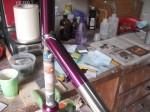


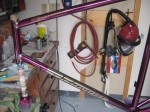




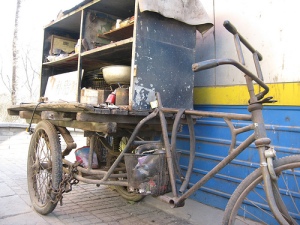




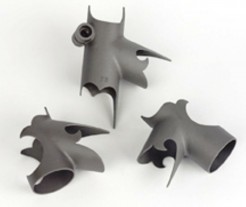

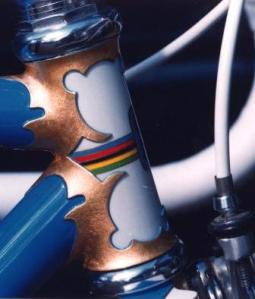


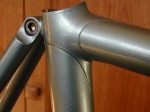




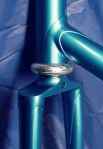





 Well, I loved that show as a kid, even though it was short lived and gave a shot of puttting on my helmet performing Buddha’s palm. All done in candy colors, rootbear, blues, gold, purple green. I am so sick of skulls and flying eagles and stuff from the motorcycle crowd. I thought it would be a little different and fun.
Well, I loved that show as a kid, even though it was short lived and gave a shot of puttting on my helmet performing Buddha’s palm. All done in candy colors, rootbear, blues, gold, purple green. I am so sick of skulls and flying eagles and stuff from the motorcycle crowd. I thought it would be a little different and fun.


